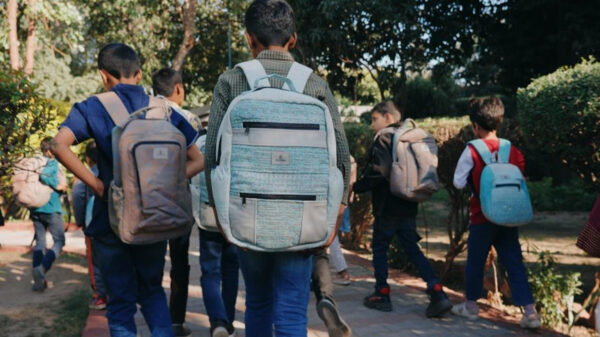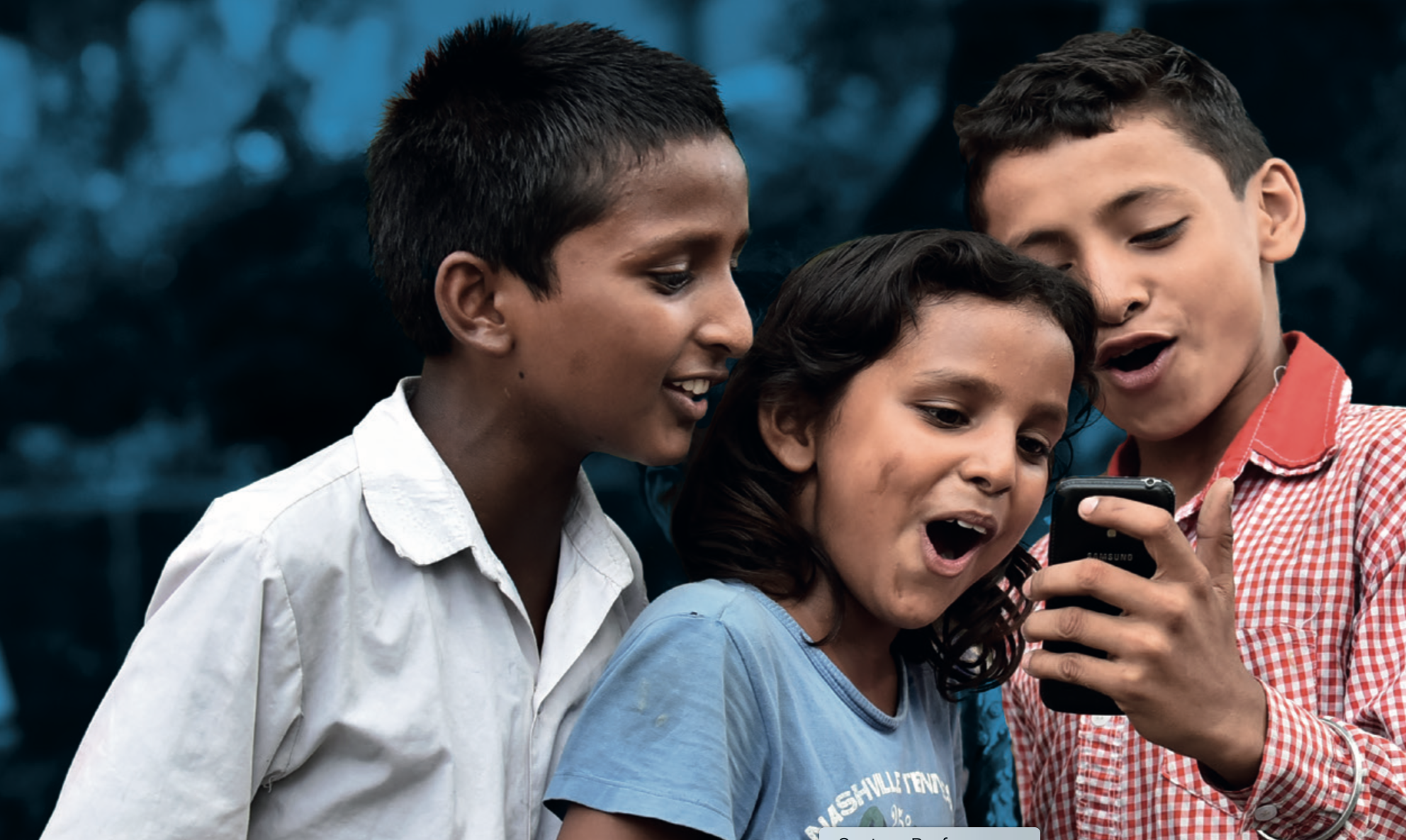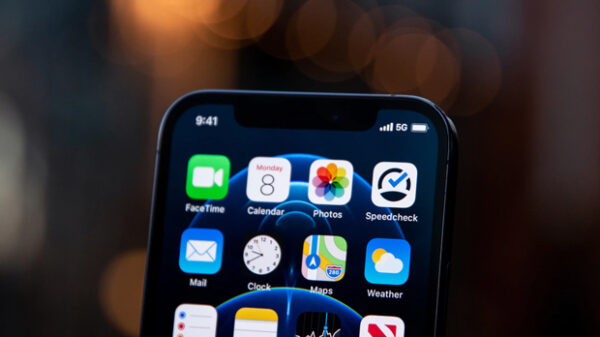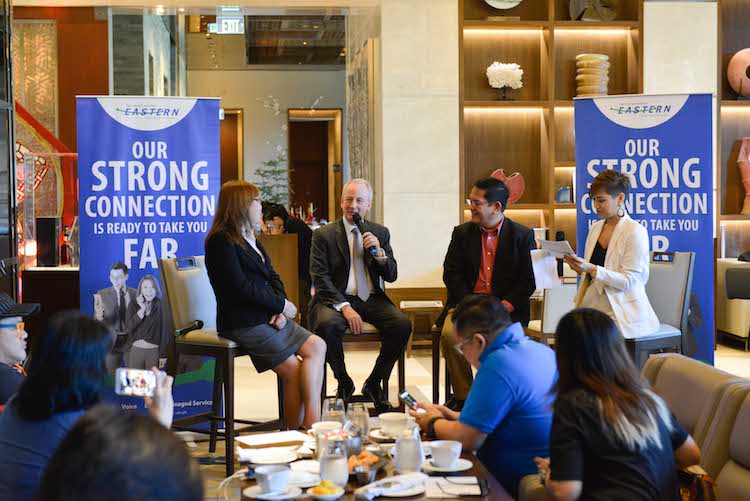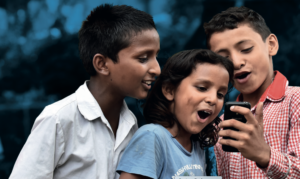
Screenshot of UNICEF report on “The State of the World’s Children 2017: Children in a Digital World.”
Despite children’s massive online presence – 1 in 3 internet users worldwide is a child – too little is done to protect them from the perils of the digital world and to increase their access to safe online content, UNICEF said in its recently released annual flagship report.
The State of the World’s Children 2017: Children in a digital world presents UNICEF’s first comprehensive look at the different ways digital technology is affecting children’s lives and life chances, identifying dangers as well as opportunities. It argues that governments and the private sector have not kept up with the pace of change, exposing children to new risks and harms and leaving millions of the most disadvantaged children behind.
“For better and for worse, digital technology is now an irreversible fact of our lives,” said UNICEF Executive Director Anthony Lake. “In a digital world, our dual challenge is how to mitigate the harms while maximizing the benefits of the internet for every child.”
The report explores the benefits digital technology can offer the most disadvantaged children, including those growing up in poverty or affected by humanitarian emergencies. These include increasing their access to information, building skills for the digital workplace, and giving them a platform to connect and communicate their views.
But the report shows that millions of children are missing out. Around one third of the world’s youth – 346 million – are not online, exacerbating inequities and reducing children’s ability to participate in an increasingly digital economy.
The report also examines how the internet increases children’s vulnerability to risks and harms, including misuse of their private information, access to harmful content, and cyberbullying. The ubiquitous presence of mobile devices, the report notes, has made online access for many children less supervised – and potentially more dangerous.
And digital networks like the Dark Web and cryptocurrencies are enabling the worst forms of exploitation and abuse, including trafficking and ‘made to order’ online child sexual abuse.
Top source of child pornography
In the Philippines, the risks to children are high with the country being the number one global source of child pornography and a hub for the live-stream sexual abuse trade. Around 8 out of every 10 Filipino children are at risk of online sexual abuse or bullying.
“Child pornography is a billion-dollar industry, and Filipino children are the ones being traded and exploited online. Children who are made to perform sex acts in front of a web camera will never get their childhood back. We must all work together to protect our children,” UNICEFRepresentative Lotta Sylwander says.
To tackle the problem of online child abuse, UNICEF in the Philippines is working with the government, private sector and child protection advocates to strengthen legislation and its implementation, support collaboration among partners, conduct studies and increase awareness.
To generate evidence, UNICEF Philippines is conducting three studies: the Kids Online Survey, the National Study on Child Online Sexual Exploitation and Changing Social Behavior on Child Online Protection in Communities. The studies seek to understand the root causes of online sexual violence and inform UNICEF’s future interventions in this area.
To strengthen coordination and help capacity development of partners, UNICEF Philippines organizes workshops and provides technical support to local and international dialogues to share best practices, safeguard standards and mechanisms and create a coalition for change within industry and related private sectors.
In 2017, UNICEF Philippines launched the Children’s Rights and Business Principles to the Philippine business community in partnership with the Makati Business Club and the Philippine Chamber of Commerce and Industry with the support of key business leaders such as Jaime Augusto Zobel de Ayala. The launch generated sign-ups for training on the Principles from 25 companies. UNICEF Philippines also continues to engage internet service providers, social media networks and remittance agencies to craft online child safeguarding policies and change business practices to stop the creation and circulation of online child sexual abuse content.
In the Philippines, various positive developments have been made to protect children online, such as:
· Inclusion of child online protection provision in the newly passed Free Internet in Public Places Act and its Implementing Rules and Regulations
· Approval by the Government of the National Response Plan to Prevent and Address Child Online Sexual Exploitation and Abuse
· Roll-out of a specific module on child online protection for family court judges as adopted by the Supreme Court in the Philippines
· Engagement with businesses and industries to increase awareness and accountability to mitigate online risks and optimize opportunities for children.
UNICEF Philippines recommends that more should be done in terms of:
· Enhanced cooperation and collaboration between the Inter-Agency Councils Against Child Pornography and Trafficking
· Increase investment for targeted advocacy to understand the harmful effects of online exploitation
· Expand competency development for frontliners, especially social workers, to provide trauma-informed care for victims and families
· Integrate parenting support interventions to understand both opportunities and risks in the digital environment
The report presents current data and analysis about children’s online usage and the impact of digital technology on children’s wellbeing, exploring growing debates about digital “addiction” and the possible effect of screen time on brain development.
Additional facts from the report include:
· Young people are the most connected age group. Worldwide, 71 per cent are online compared with 48 per cent of the total population.
· African youth are the least connected, with around 3 out of 5 youth offline, compared to just 1 in 25 in Europe.
· Approximately 56 per cent of all websites are in English and many children cannot find content they understand or that is culturally relevant.
· More than 9 in 10 child sexual abuse URLs identified globally are hosted in five countries – Canada, France, the Netherlands, the Russian Federation and the United States.
Only collective action – by governments, the private sector, children’s organizations, academia, families and children themselves – can help level the digital playing field and make the internet safer and more accessible for children, the report says.
Practical recommendations to help guide more effective policymaking and more responsible business practices to benefit children include:
· Provide all children with affordable access to high-quality online resources.
· Protect children from harm online – including abuse, exploitation, trafficking, cyberbullying and exposure to unsuitable materials.
· Safeguard children’s privacy and identities online.
· Teach digital literacy to keep children informed, engaged and safe online.
· Leverage the power of the private sector to advance ethical standards and practices that protect and benefit children online.
· Put children at the centre of digital policy.
“The internet was designed for adults, but it is increasingly used by children and young people – and digital technology increasingly affects their lives and futures. So digital policies, practices, and products should better reflect children’s needs, children’s perspectives and children’s voices,” said Lake.


